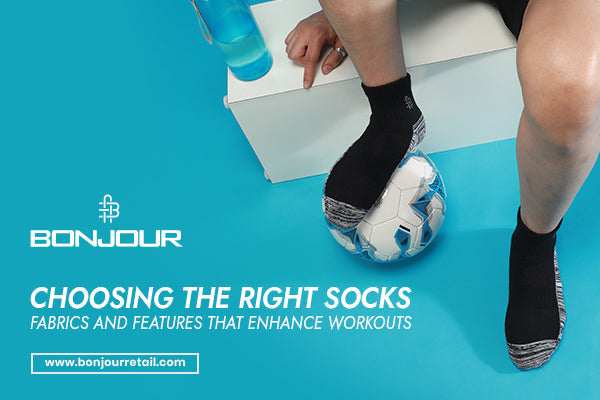
The Importance of Sports Socks: How They Enhance Comfort and Performance
When it comes to athletic performance, most people focus on shoes, equipment, or training routines, often overlooking one essential piece of gear sports socks. The right pair of sports socks does more than just cover your feet. They provide comfort, support, and protection, helping athletes perform better while reducing the risk of injury. From running and gym workouts to team sports, sports socks are designed to meet the unique demands of active feet.

What are the benefits of sports socks?
Sports socks offer a wide range of advantages that go beyond simple foot coverage. They provide unmatched comfort through soft, breathable materials that prevent chafing and blisters, while cushioned heels and arches help reduce foot fatigue during workouts. Additionally, sports socks manage moisture effectively, keeping feet dry and odor-free even during intense physical activity. With proper padding in key areas, they also help prevent friction-related injuries such as blisters and calluses. By combining comfort, support, and protection, sports socks allow athletes to focus entirely on their performance.
What features should you look for in sports socks?
Not all socks are created equal, and choosing the right pair is essential for optimal performance. High-quality sports socks usually include extra cushioning on the heel, toes, and sole to absorb impact during running or jumping. Arch support ensures stability, while seamless designs minimize friction to prevent blisters. Breathable mesh zones or moisture-wicking materials improve airflow, keeping feet comfortable throughout activity. Paying attention to these features ensures that your socks enhance performance rather than hinder it.
Which fabric is best for sports socks?
Fabric plays a critical role in determining how well sports socks perform. Synthetic blends, such as polyester, nylon, or spandex, are excellent at wicking away moisture while providing flexibility and stretch. Bamboo or cotton blends offer softness and breathability, though pure cotton can retain sweat. Merino wool is another premium option, naturally regulating temperature, wicking moisture, and resisting odors, making it ideal for outdoor sports or long workouts. Choosing the right fabric depends on the type of activity, climate, and personal comfort preferences.
How do sports socks improve performance?
Sports socks do more than protect your feet—they actively enhance athletic performance. Arch and ankle support help improve stability, posture, and balance, while cushioned areas absorb shock to reduce fatigue, allowing athletes to train longer with less discomfort. Some designs also include compression zones that improve blood circulation, which can reduce muscle strain and aid in recovery. Comfortable, well-designed sports socks give athletes the confidence to focus fully on their performance, knowing their feet are supported and protected.
How to tell if sports socks are good quality?
High-quality sports socks stand out in both durability and comfort. Premium materials resist wear and maintain elasticity over time, while reinforced areas around the heels and toes ensure long-lasting protection. Effective moisture management keeps feet dry during intense workouts, and the right fit ensures the socks stay in place without slipping or bunching inside shoes. Investing in quality sports socks guarantees that your feet remain comfortable, protected, and ready for peak performance.

Conclusion
Sports socks are an often-overlooked but essential part of athletic gear. They provide comfort, support, and protection while enhancing performance and preventing injuries. From moisture management and cushioning to stability and recovery, the right sports socks make a real difference in how athletes train and perform. For anyone serious about fitness or sports, choosing the right pair of sports socks is more than a detail—it’s a key factor in achieving success and keeping your feet healthy.






